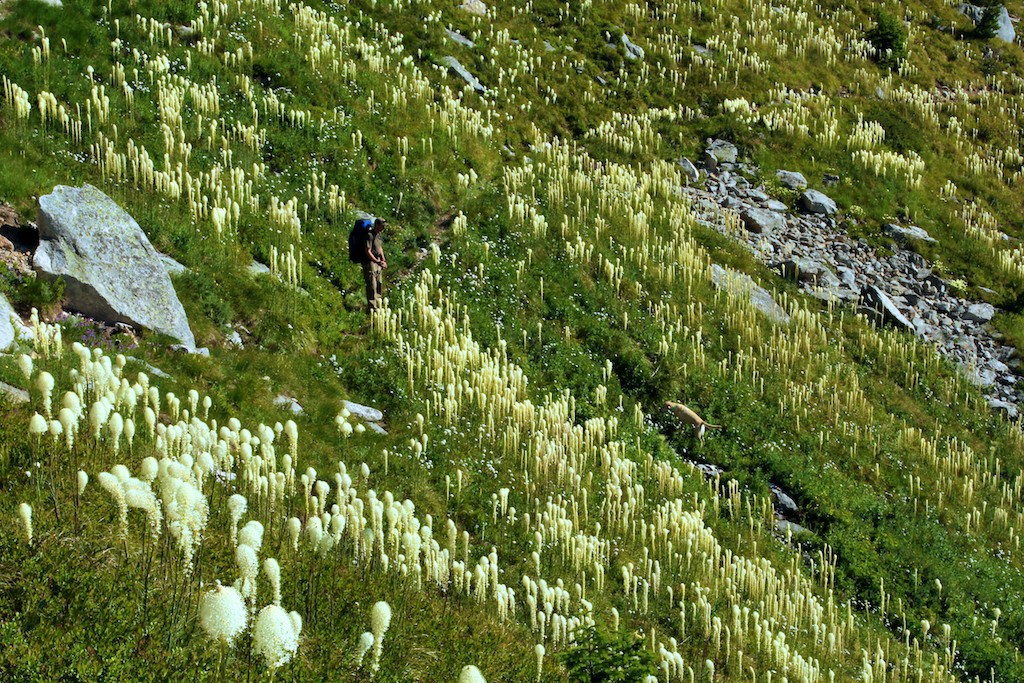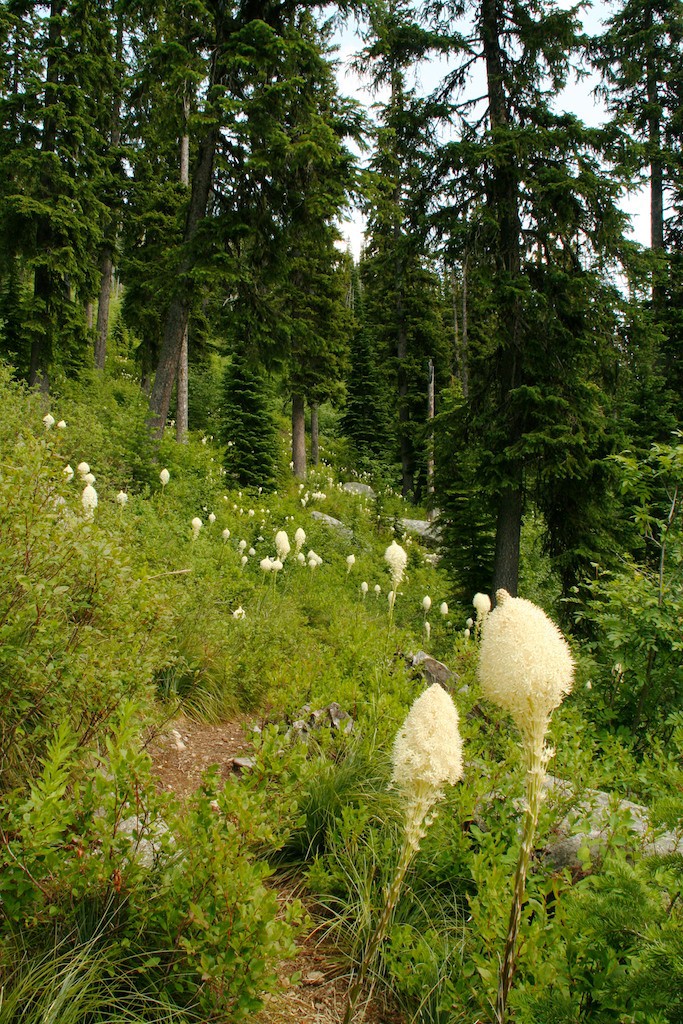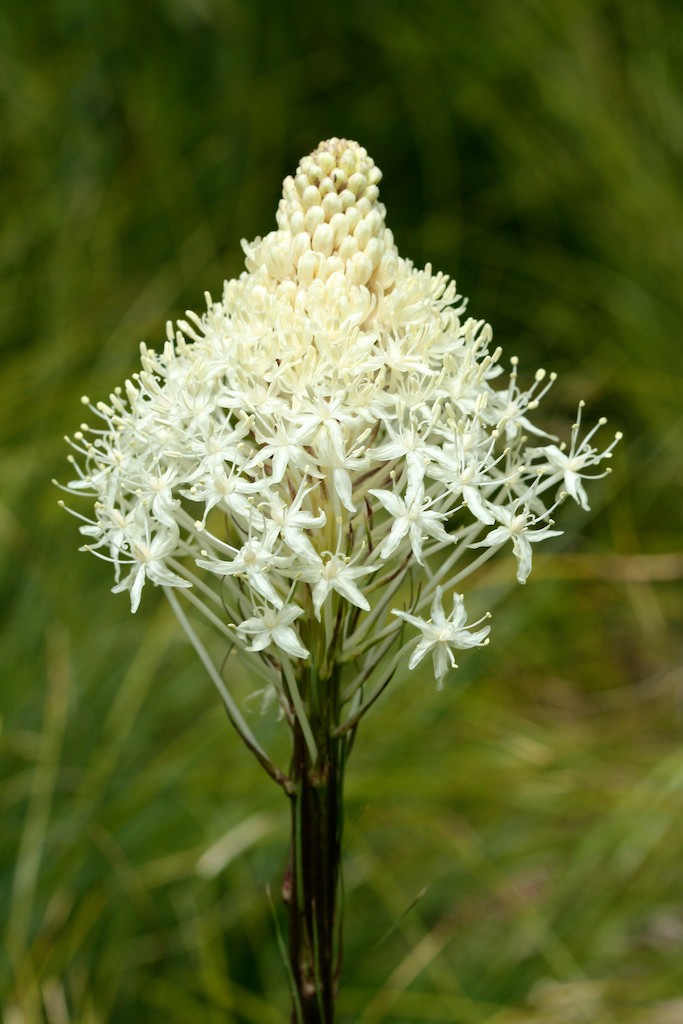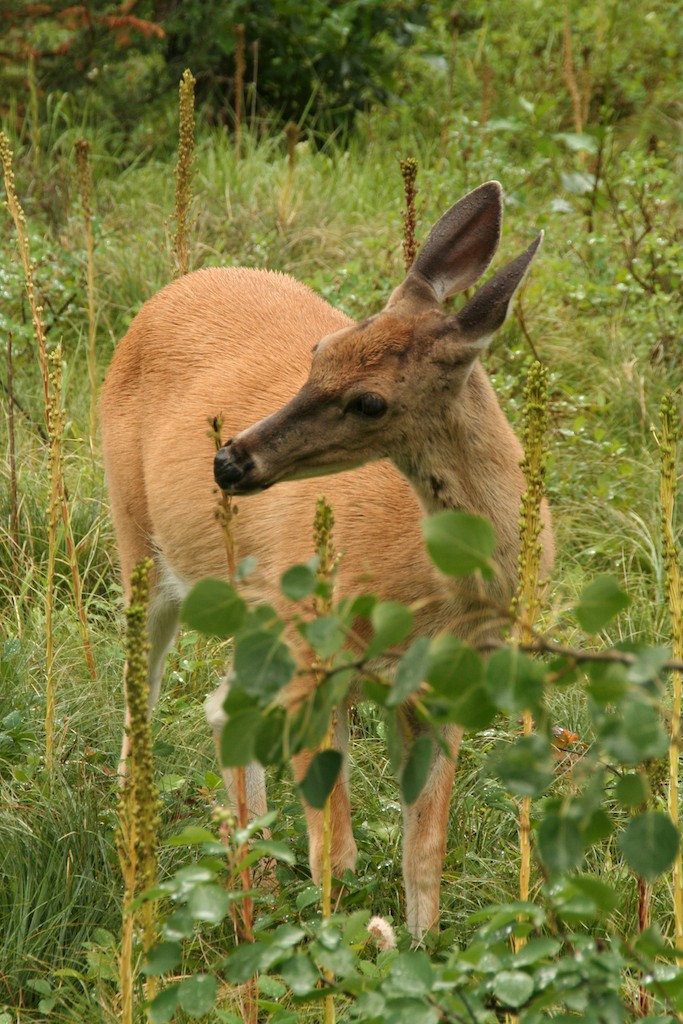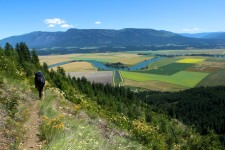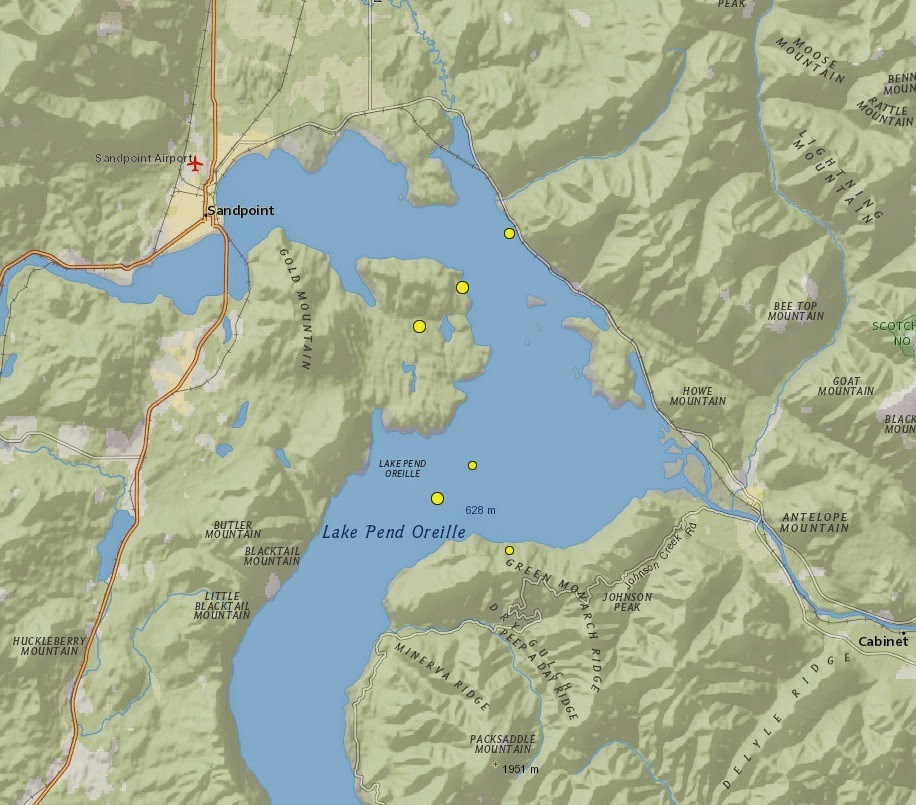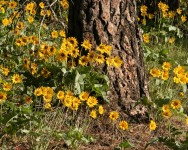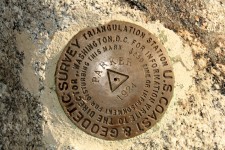While on the Parker Ridge trail below Parker Peak last summer, I rounded a corner and was surprised by the hundreds of beargrass blooms filling the avalanche chute in front of me. The magnitude of blooms was the largest I had ever seen and one I won’t forget. Will the blooms be of the same magnitude this summer?
Folklore suggests beargrass blooms every five to seven years and in some locations that is true. However, beargrass in other locations blooms every year or every ten years. Flowering depends on site-specific conditions—particularly moisture and light.
Beargrass tends to flower more in open areas, such as avalanche chutes, than under conifer canopies but beargrass if often the dominant plant under those conifers. Beargrass can also be found on ridges and talus slopes.
Flowering may be influenced by spring rainfall and soil moisture but scientists are uncertain of the exact requirements for flowering. While beargrass is adapted to harsh environmental conditions, such as low moisture and nutrient levels, adequate amounts of each are needed to produce flowers.
The large, showy blooms consist of 50 to 400 small creamy white flowers that open starting at the bottom. Each flower may only be receptive to pollination for a few days but the entire cluster may be in bloom for two weeks. Once the plant blooms it dies but the plant may take as long as 12 years to produce flowers.
Since beargrass also reproduces by rhizomes the plant seems to be long-lived. The rhizomes (underground stems) give rise to offshoots that create plants with each plant having multiple flower rosettes and each rosette blooms once.
Beargrass thrives on a certain level of habitat disturbance. Rhizome production increases after disturbance from short fires, timber harvest, mudflows and debris slides. However, intense fires that linger in one place tend to kill the rhizomes.
The offshoots generated give rise to the long, grass-like leaves of beargrass. However, beargrass isn’t a grass but instead a wildflower since grasses have hollow stems, small flowers with no petals and are wind pollinated. Beargrass was previously classified as a lily but was recently split into the Melanthiaceae family.
Despite that, the name beargrass rings true. Bears use the leaves for denning material and they eat the fleshy leaf base in the spring. Mice and pocket gophers also eat the fleshy leaf base and live among the dense clumps of “grass”, hiding from raptors at the same time. In the winter, the evergreen leaves are eaten by mountain goats if other food is scarce.
The more sought after part of the plant is the flower. An area of tall stalks devoid of flowers is a tell-tale sign of elk or deer feasting on the blooms. The flowers’ pollen also provides food for at least 36 species of flies, beetles and bees.
Not only is beargrass important for pollinating insects and animals, but it is also important to people. Native Americans harvest the leaves for basketry and other crafts while florists harvest the leaves for floral arrangements.
For those lucky enough to live in the Pacific Northwest where beargrass only grows, a bumper crop of beargrass blooms is an unforgettable sight. Time will only tell if the beargrass will bloom as profusely as last year.

